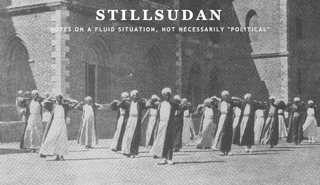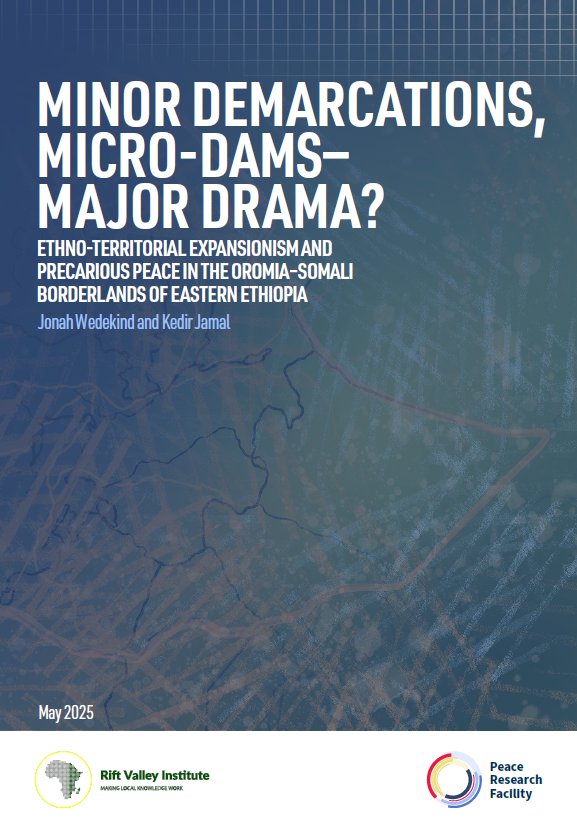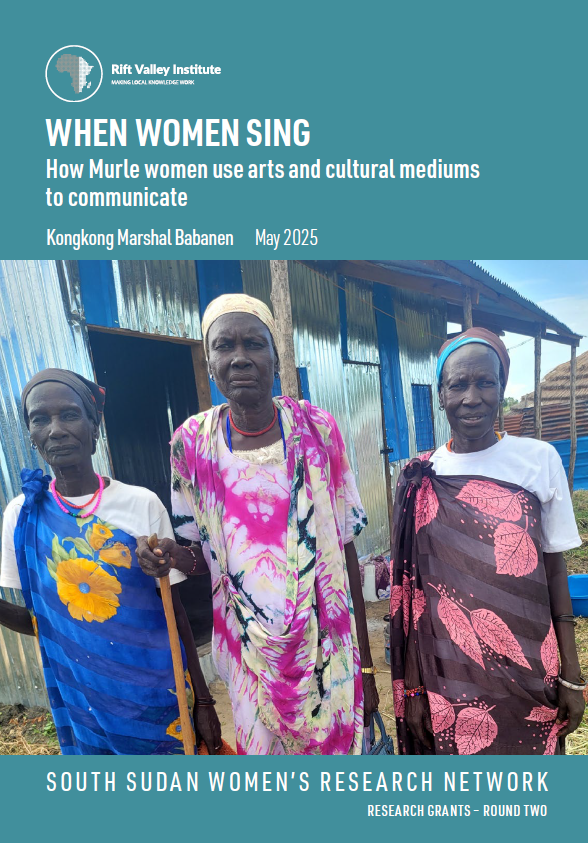 RVI Fellow Magdi el-Gizouli on the ascendancy of the commander of Sudan’s Rapid Support Forces
RVI Fellow Magdi el-Gizouli on the ascendancy of the commander of Sudan’s Rapid Support Forces
The media simply can’t get enough of him. The commander of the Rapid Support Forces (RSF) Mohamed Hamdan Daglo, famous as Himeidti, a motherly diminutive version of his first name, is as ubiquitous as Zain advertisements. Two major newspaper published interviews with the ‘hero’ of al-Nakhara in one day. The official Sudan TV and the government-associated al-Shurooq TV recycle reports about the man and the RSF victory over forces of the Justice Equality Movement in South Darfur’s al-Nakhara and Goz Dango on 26 April generously illustrated with images of the fast-bloated corpses on the battlefield and the fear-stricken faces of teenage JEM combatants in captivity.
The RSF entered Nyala in a victory parade to demonstrate the vehicles and weaponry captured from the JEM, now on display in a town square. The governor of the state, Adam Mahmoud Jar al-Nabi, himself an officer of the Sudan Armed Forces (SAF), declared the RSF victory unprecedented in the history of the Sudanese army. The SAF commander in Nyala, a jolly if not clownish chubby figure, stood beside Himeidti as a minor, cheering his throat sore. It was on the battlefield of Goz Dango though that Himeidti had his finest moment. The president, the National Intelligence and Security Service (NISS) director and the defence minister flew in on 28 April to congratulate the RSF soldiers. A confident Himeidti read out a long list of war booty to enthralled soldiers and then stood aside.
The NISS director had a message to deliver though. He dedicated the RSF victory to the president, saying it was their way of marking the president’s electoral fete, and then talked business. “We want a new political phase with no khamaj”, he addressed Bashir. Khamaj in the dictionary of riverine Sudan is usually reserved for the playful mess of children and in another context the wasteful behaviour of indulgent wives and spoiled sons. The NISS director was arguably expressing his institutional opinion on the government’s political behaviour towards enemies he considers fit for the sword. To describe the JEM fighters at his mercy, the NISS director repeated the word bughaa (sing. baghi), classical Arabic from the dictionary of Islamic jurisprudence that translates into aggressors, a determination meant to justify war against fellow Muslims. The minister of defence had only his trademark battle cry amsah..aksah to add, i.e. wipe out, crush, which the soldiers of the RSF eagerly repeated in tandem.
Hoisted on the top of a Land Cruiser to speak, the thankful president skipped the introductory niceties to announce that rewards and incentives for the fighting force were ready to pay. “I signed the list of promotions that I received from you without even looking at it,” he told the RSF soldiers adding that every combatant in the battle will be granted Sudan’s ‘badge of courage’. For a moment there it was not immediately evident who was commanding whom. The president, obviously overwhelmed by the smouldering heat, the mass of soldiers in arms and the stench of the battlefield, grimaced in discomfort. The cheers around him were no more the familiar religious phrases of the Popular Defence Forces (PDF) era but thoroughly secular war cries of machismo and vengeance. Loyalty on the battlefields of the really existing New Sudan, as the president recognised, was a function of rewards and incentives, a transaction unmediated by the promises of heartbreaking compliant virgins in heaven. No wonder the president’s speech was particularly short; it did not feature the customary celebration of sacrifice and martyrdom for the sake of the Almighty. Judging by the slogans the JEM combatants had on their vehicles, they appeared more convinced of carrying out a mission of divine providence than the RSF chaps. The JEM gave its attack column the name al-shaheed (martyr) Khalil Ibrahim, its late leader succeeded by his brother Gibreel.
The government, following Himeidti’s lead, announced the ultimate demise of the JEM, a declaration that stretches the victory in South Darfur beyond its merit, considering that the JEM has repeatedly managed to bounce back from crushing defeats, in Omdurman in 2008 and in Kordofan in 2011. Himeidti claimed that surviving commanders of the JEM force fled back into South Sudan’s Bahr al-Ghazal where they still maintain a hundred or so combat adjusted Toyotas, in disrepair he alleged. The militia leader appeared better informed about the situation of his enemies than the SAF spokesman, or the minister of defence for that matter who parroted further his amsah..aksahwhenever opportunity allowed. In Khartoum the security authorities seized on the opportunity offered by the killing of a NCP student leader in clashes with opposition Darfur students in a Khartoum university to clampdown on Darfur student associations, repeating a pattern of ethnic profiling and targeting seen after the 2008 JEM attack on the capital. The show of force in Nyala and Khartoum was an end in itself, an attempt to suppress dissidence with the shock of unrestrained power.
Assertive and and self-satisfied, Himeidti promised the media audience new victories in South Kordofan, reiterating as if to convince himself and his troops that the RSF were ready for deployment anywhere in Sudan, not only Darfur. In the particular ways of the political marketplace, to use a concept developed by Alex de Waal, Himeidti might be asking for a higher price. In Darfur, Musa Hilal drew the ‘right’ conclusions from Himeidti’s changing fortunes. The Revolutionary Awakening Council, a political umbrella under Hilal’s authority, demanded a place at the table in the government-led national dialogue, posts in the new cabinet and at least one governorship position in Darfur while offering back a loud condemnation of the Sudan People’s Liberation Army/Movement in North Sudan (SPLA/M-N) and the Sudan Revolutionary Front (SRF). The demands coincided with rumours that Osman Mohamed Yusif Kibir, current governor of North Darfur and Hilal’s main rival, will be transferred to Gedaref in a post-elections shake up of governors. Who would take over as chief of North Darfur is in the stars, but some stars shine on Hilal’s guns or Himeidti’s.
In July 2014, Ismail al-Aghbash representing Hilal signed a memorandum of understanding with the SPLA/M-N commander Jagoud Mikwar Murada pledging cooperation on building a democratic system of government in Sudan. Earlier in the year, Hilal’s militias seized control of the western localities of North Darfur, Saraf Amra, Kutum, Kebkabiya, al-Sireif and al-Waha, where the man now exercises authority through local administration councils, liberated areas under autonomous rule? When asked about the possible role of the RSF in reigning in ‘tribal conflicts’ in Darfur, Himeidti said the RSF lacks the mandate to do so but would welcome the challenge. The depiction ‘tribal conflicts’ has become Khartoum’s blanket diagnosis of the multiple sources of violence engulfing the devastated western periphery of the country. While the vehicles of violence are in many instances tribal, its self-propagation seems to be a structural adaptation to the abject collapse of the rural economy of the region, whereby guns are employed as means of livelihood, tools of prey in an austere environment of lawlessness. Himeidti, now a uniformed officer, spoke of “rogue elements” in Darfur as the next target of the RSF. The khamaj he has in mind, I suppose, might well involve prey on his predecessor Hilal.


